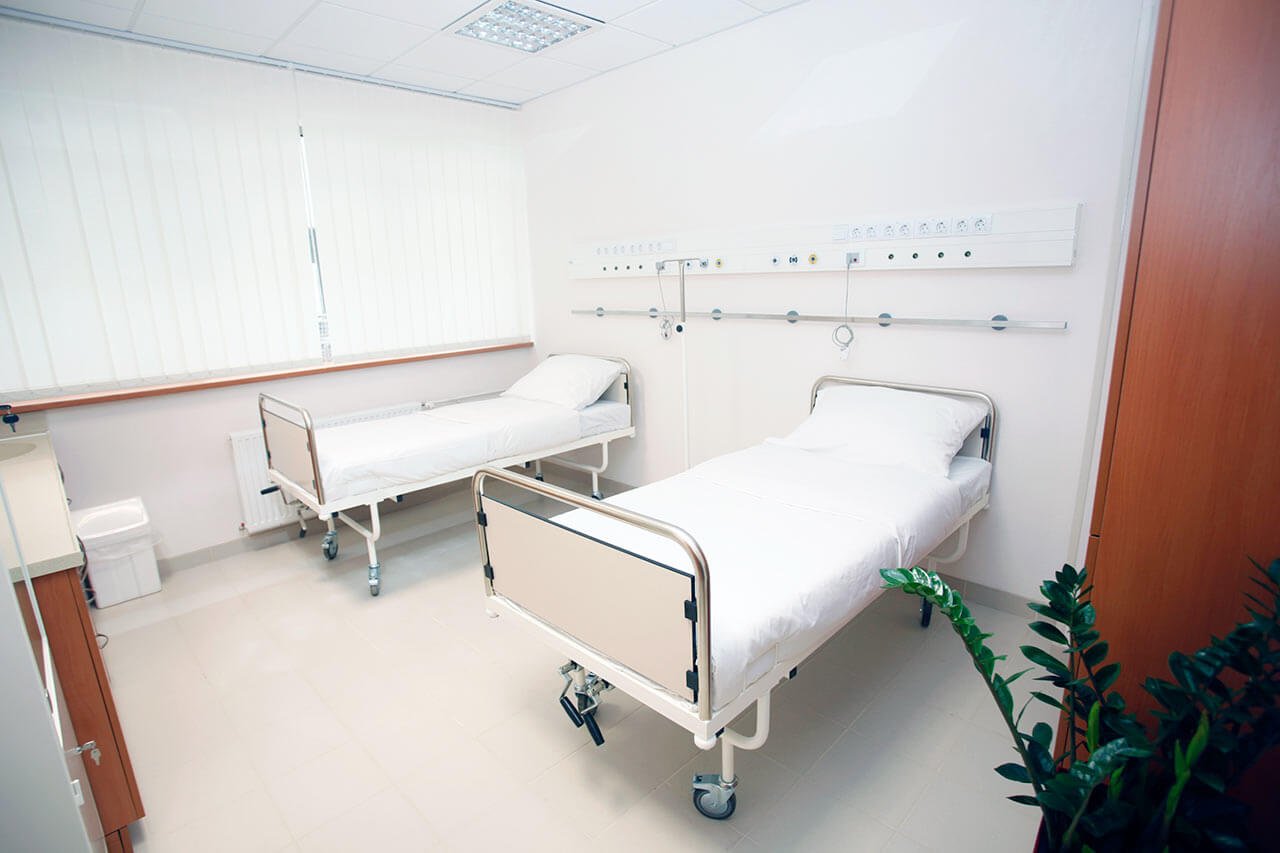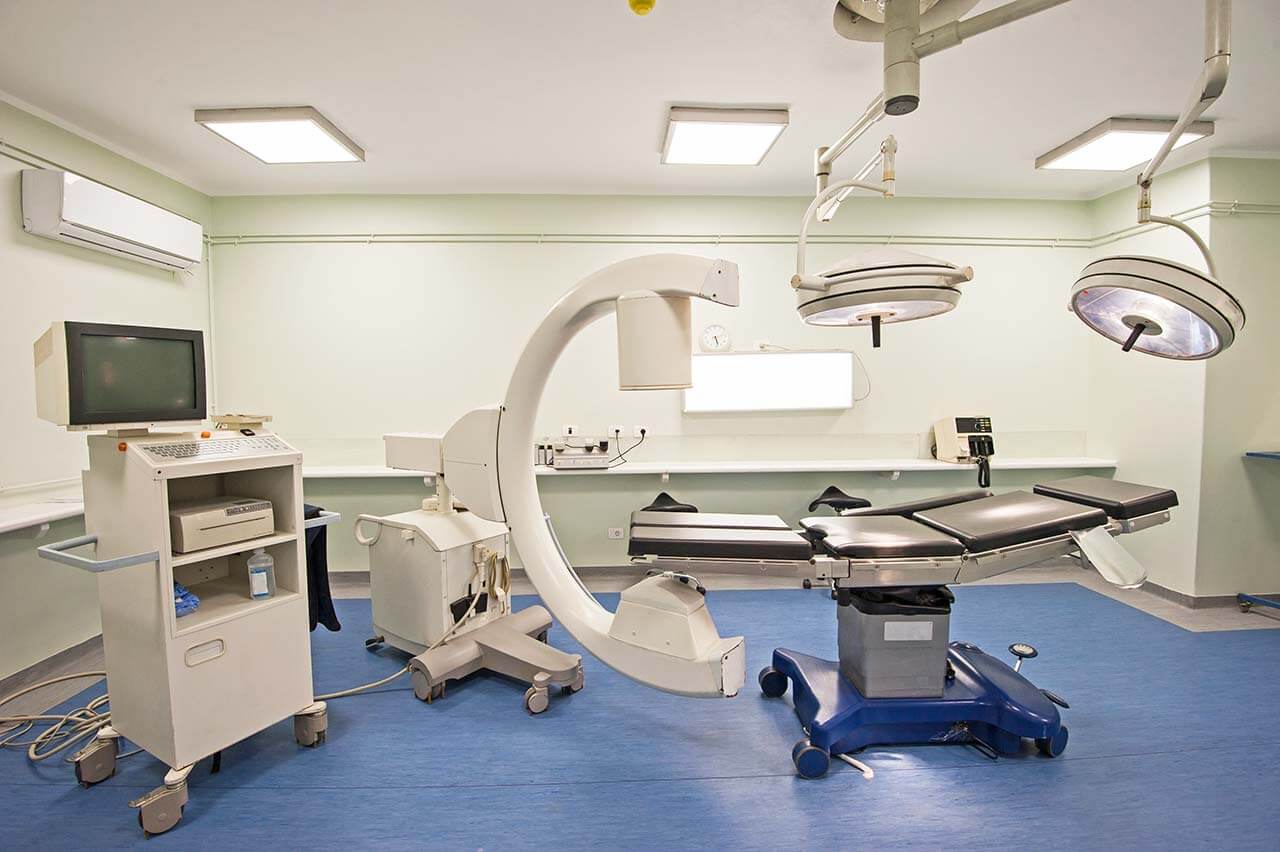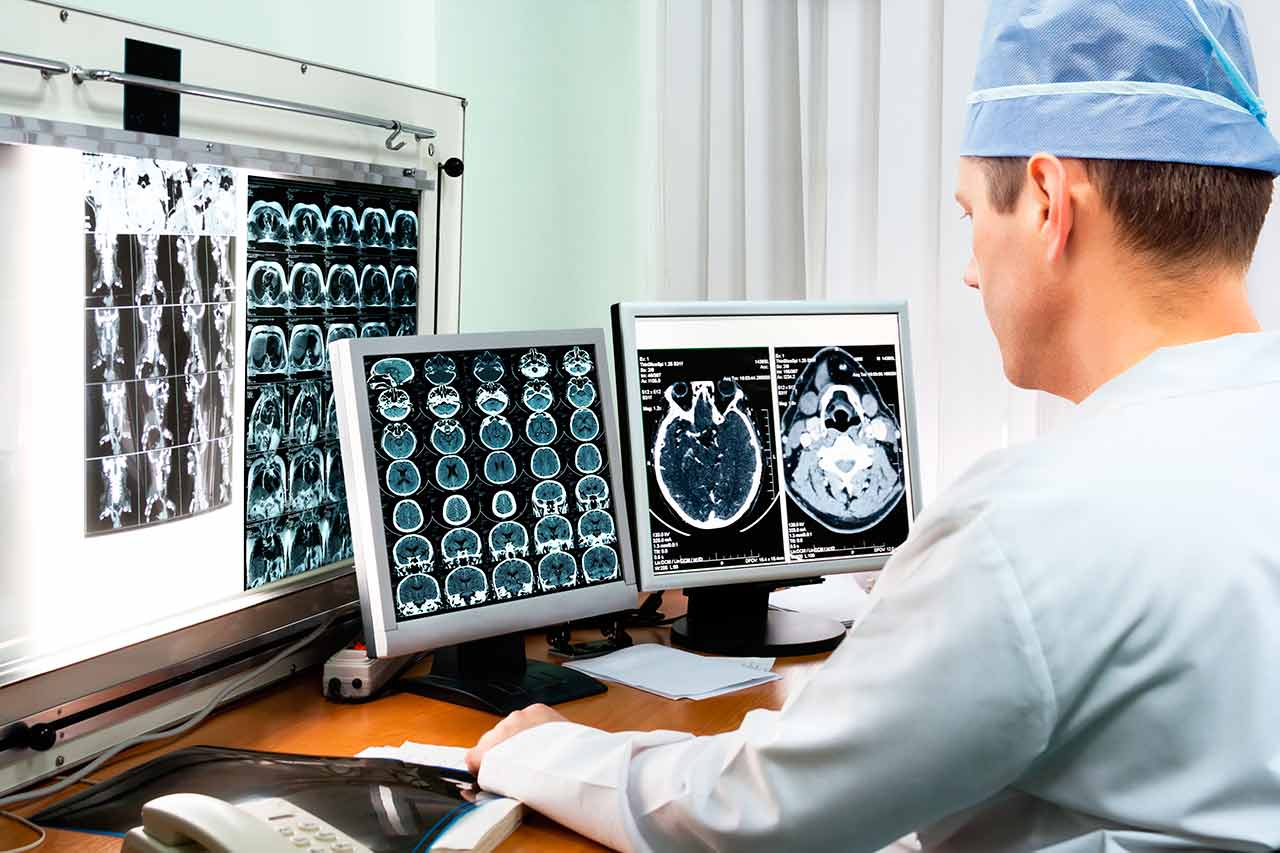
The program includes:
- Initial presentation in the clinic
- clinical history taking
- physical examination
- review of medical records
- laboratory tests:
- complete blood count
- general urine analysis
- biochemical analysis of blood
- indicators of inflammation (CRP, ESR)
- indicators blood coagulation
- x-ray examination of the hip
- MRI scan of the hip
- preoperative care
- hip replacement (hip endoprosthesis)
- symptomatic treatment
- control examinations
- physiotherapeutic procedures
- orthopedic appliances
- the cost of essential medicines and materials
- nursing services
- full hospital accommodation
- explanation of future recommendations
How program is carried out
Preliminary preparation for hip replacement includes quitting smoking and drinking alcohol; cancelling non-steroidal anti-inflammatory drugs (diclofenac, ibuprofen); cancelling anticoagulants (warfarin); normalization of body mass, if possible.
Preoperative examination, including consultation with an anesthesiologist and necessary related specialists, takes 1-2 days. According to its results, the most suitable endoprosthesis is selected.
Hip replacement. The operation is performed under general anesthesia. The patient lies on his side, the affected leg is bent and fixed in this position. The surgeon makes an incision 15-20 cm long, minimally traumatizing the muscles and nerve endings. Through this incision, miniature instruments are inserted to remove the damaged joint structures. Healthy bone is adjusted for further reliable implant fixation.
The surgeon installs a femoral stem in the center of the upper part of the femur. Ball-shaped head of the joint is fixed on it. The surgeon also implants a special liner that facilitates movement of the leg and protects the structures of the prosthesis. After the primary fixation of the prosthesis components, the doctor assesses the joint range of motion, as well as the length and symmetry of the lower limb.
The implant is fixed with cement or cementless method. The doctor treats the operating field with antiseptics, conducts its final revision and sutures the wound layer by layer. A temporary drainage is installed in the joint, and a bandage is applied on top.
Postoperative care. During the first day after the intervention the patient stays in the intensive care unit, under round-the-clock medical supervision. After that, with a smooth course of the postoperative period, the patient is transferred to a regular ward and the drains are removed. The range of motion expands gradually, from light toes movements to walking. Walking with the use of walking aids is allowed in 3-5 days after the operation.
Required documents
- Medical records
- X-ray examination (if available)
- MRI/CT scan (if available)
Service
You may also book:
 BookingHealth Price from:
BookingHealth Price from:
About the department
The Department of General Orthopedics and Orthopedic Oncology at the University Hospital Muenster offers the full range of conservative and surgical treatment of all musculoskeletal diseases. The department ranks among the largest medical facilities of this kind in Germany, as well as among the specialized authoritative departments for the treatment of bone and soft tissue tumors in the European medical arena. The treatment is carried out both on an outpatient and inpatient basis, including the outpatient operations. In addition to its successful clinical activities, the department is proud of its productive research work, which has given birth to many innovations in orthopedics, for example, the department's specialists have patented the very latest prosthetic systems, particularly in the field of orthopedic oncology. The Chief Physician of the department is Prof. Dr. med. Georg Gosheger.
The doctors of the department have excellent qualifications and vast experience in the treatment of musculoskeletal cancer. The patients with such pathologies come here not only from other cities of Germany, but also from many other countries of the world. In order to ensure the comprehensive treatment and the most favorable therapy outcome, there is maintained close cooperation with the Comprehensive Cancer Center Muenster. In the course of therapy, all the necessary specialists are involved in the process, who carefully think through each stage of the treatment and the subsequent recovery of the patient. Considerable attention is paid to the psychological support of patients, since the diagnosis of cancer in most cases causes a great emotional shock.
The department also gained an excellent reputation in the treatment of joint diseases (certification as the Maximum Care Center for Joint Replacement Surgery by the German Society of Orthopedics and Orthopedic Surgery (DGOOC) and Working Group on Joint Replacement Surgery (AE)). The focus is on the treatment of arthropathy, synovitis and сhondropathy, as well as the knee and hip replacement surgery (partial and total replacement surgery, revision interventions for the endoprosthetic replacement). In the case of hip joint replacement surgery, cemented or cementless prosthesis, as well as combined (hybrid) prostheses are used. With appropriate indications, the surgical interventions are performed using sparing minimally invasive techniques. If it is necessary to replace the knee joint, the doctors perform treatment with the help of sliding prostheses, bicondial endoprosthesis (сemented and cementless fixation) and revision prosthesis. The most appropriate treatment option is determined depending on the severity of the joint disease or degeneration, as well as on the patient’s specific needs and wishes.
The service range of the department includes:
- Orthopedic oncology and revision surgery
- Resection of malignant bone tumors
- Joint replacement surgery after tumor resection
- Reconstruction using biological materials
- Treatment of bone metastases
- Treatment of malignant soft tissue tumors
- Treatment of benign soft tissue and bone tumors
- Amputation and limb reconstruction surgery
- Diabetic foot treatment
- Charcot foot (neuro-osteoarthropathy) treatment
- Consultations and selection of auxiliary orthopedic appliances (for example, prostheses, orthoses, orthopedic shoes)
- Spinal surgery
- Correction of spinal deformities
- Scoliosis
- Kyphosis
- Spondylolisthesis
- Thorax deformities
- Treatment of degenerative changes in all parts of the spine
- Spinal disc herniation
- Spinal stenosis
- Osteochondrosis
- Spinal osteoarthritis (for example, intervertebral joints)
- Spondylolisthesis
- Anococcygeal pain syndrome (coccyalgia)
- Degenerative changes of the sacroiliac joint
- Treatment of spinal tumors and metastases
- Primary spinal tumors
- Metastases (secondary spinal tumors)
- Treatment of spinal inflammatory diseases and infectious lesions
- Spondylodiscitis
- Rheumatic spinal diseases
- Acute and emergency clinical cases
- Acute damage to the spinal cord (paraplegia)/acute nerve injury due to the spinal diseases
- Spinal disc herniations
- Instability/fractures (for example, in osteoporosis, tumors, inflammation)
- Pain syndromes
- Correction of spinal deformities
- Hip and knee replacement surgery
- Primary hip replacement surgery
- Minimally invasive primary implantation of the endoprosthesis through the direct anterior access
- Treatment of hip dysplasia and hip dislocation
- Manufacture of special prostheses
- Endoprosthetics in metastases
- Revision hip replacement surgery
- Aseptic/septic revision surgery
- Periprosthetic fractures
- Repair of large defects in the pelvis using modular systems
- Reconstruction of defects in the bone using modular prostheses up to the total replacement of the femur by special replacement systems (MUTARS)
- Septic revision surgery (even in infection with multidrug-resistant microorganisms)
- Plastic surgery for the reconstruction of defects and treatment of infections
- Primary knee replacement
- Implantation of special coated (Titaniob) prostheses
- Partial replacement surgery using sliding prostheses
- Revision knee replacement surgery
- Modular revision systems with all fixation types
- Reconstructive interventions in ligament instability and bone defects
- Periprosthetic fractures
- Reconstruction of large defects after oncology using special modular systems
- Septic interventions of all types, followed by plastic reconstruction
- Primary hip replacement surgery
- Shoulder surgery and orthopedic sports medicine
- Treatment of shoulder diseases
- Impingement syndrome
- Osteoarthritis of the acromioclavicular joint
- Rotator cuff tear
- Shoulder dislocation and instability
- Biceps tendon injuries
- Shoulder arthrosis
- Frozen shoulder
- Calcification of the forearm
- Acromioclavicular joint injuries
- Knee injuries
- Meniscus injuries
- Cruciate ligament injuries
- Cartilage damages/osteochondral lesions
- Patellar instability
- Hip injuries
- Hip impingement syndrome
- Articular lip lesions
- Elbow lesions
- Tennis elbow
- Free articular body
- Shoulder stiffness
- Arthrosis
- Injuries of the upper ankle
- Impingement syndrome
- Cartilage damage/osteochondral lesions
- Treatment of shoulder diseases
- Experimental orthopedics (interdisciplinary, translational and clinical researches)
- Other medical services
Curriculum vitae
Professional Activities
- 1988 - 1995 Study of Human Medicine, Westphalian Wilhelm University, Muenster.
- 1995 Doctoral thesis defense. Subject: "Diabetic osteoarthropathy of the foot".
- 1995 - 1996 Training for the title of a Medical Specialist in Traumatology, Nordsee Clinic, Westerland/Sylt.
- 1996 - 2000 Training for the title of a Medical Specialist, Department of General Orthopedics, University Hospital Muenster.
- 2000 Senior Physician, Department of General Orthopedics, University Hospital Muenster.
- 2002 Head of the Department of Orthopedic Oncology and Limb Reconstruction.
- 2003 Habilitation: "Endoprosthetics in Oncopathology – New Developments in Reconstructive Surgery".
- 2005 Managing Senior Physician (DRG Representative, Senior Staff Physician).
- 2006 Leading Senior Physician and Deputy Head of the Department.
- 2008 Invitation to the position of W3 Professor, University Hospital Würzburg.
- 01.09.2008 Appointment as a Full Professor and Head of the Department of General and Orthopedic Oncology, University Hospital Muenster.
Medical Specialization
- Medical Specialist in Orthopedics.
- Medical Specialist in Orthopedics and Traumatology.
- Medical Specialist in Special Orthopedic Surgery.
- Additional qualification in Sports Medicine.
- Additional qualification in Physiotherapy.
- Additional qualification in Radiography of the Skeleton.
Memberships and Positions in Professional Societies
- German Association of Orthopedics and Orthopedic Surgery (DGOOC).
- President of the European Musculo-Skeletal Oncology Society (EMSOS).
- Board Member of the International Society of Limb Salvage (ISOLS).
- Association of German Higher Education Institutions.
- Transparency International Deutschland e.V.
Other Activities, Qualifications, Awards
- Trainer in Sonography of the Musculoskeletal System and Hip in Infants (ÄKWL).
- Certificate of the International Association for the Study of Osteosynthesis (basic course, advanced course).
- Certificate on training in the field of MRI.
- Theoretical basics of the specialty: Radiological Protection (X-ray diagnostics of the entire skeleton).
- Rizzoli Oncology Courses (Prof. Enneking, Prof. Campanacci).
Photo of the doctor: (c) Universitätsklinikum Münster
About hospital
According to the Focus magazine, the University Hospital Muenster ranks among the top German hospitals!
The hospital belongs to the most prestigious medical institutions in Germany. The hospital is distinguished by a high professionalism of its doctors, state-of-the-art technological equipment and the availability of the most advanced diagnostic and therapeutic capabilities ensuring the first-class medical services. The hospital integrates more than 30 specialized departments, as well as numerous institutes and centers, thus representing all the specialties of modern medicine. The hospital treats more than 64,000 inpatients and 500,000 outpatients every year, which is an indisputable evidence of the highest quality of medical services.
The medical team of the hospital, consisting of more than 10,000 employers, is committed to preserving the physical health of patients, providing them with psychological support and compassionate attitude throughout the entire therapeutic process.
The hospital has succeeded in all specialties of medicine, however, main areas of its specialization include oncology, treatment of cardiovascular, neurological diseases, transplant medicine, psychiatry and psychosomatics, pediatrics with a special focus on rare diseases in children, traumatology, orthopedics, prenatal medicine, and reproductive medicine. In addition, key importance is given to scientific research and training of medical students, so that the specialists of the hospital make a momentous contribution to the development of medicine as a whole.
Photo: (с) depositphotos
Accommodation in hospital
Patients rooms
The patients of the University Hospital Muenster live in single or double rooms. The rooms are made in bright colors and modern design. Each room has an ensuite bathroom with shower and toilet. The standard room includes an automatically adjustable bed, a bedside table, a table and chairs for receiving visitors, a telephone and a TV. The hospital offers access to the Internet. If desired, the patient can also stay in the enhanced-comfort room.
Meals and Menus
The patients of the hospital are offered a tasty and balanced three meals a day: breakfast, lunch and dinner. The menu always features diet and vegetarian dishes. If for any reason you do not eat all the food, you will be provided with an individual menu. Please inform the medical staff about your dietary preferences prior to the treatment.
Further details
Standard rooms include:
Religion
Religious services are available upon request.
Accompanying person
During the inpatient program, an accompanying person may stay with you in a room or at the hotel of your choice.
Hotel
During the outpatient program, you can live at a hotel of your choice. Managers will help you to choose the most suitable options.
The hospital offers a full range of laboratory tests (general, hormonal, tests for infections, antibodies, tumor markers, etc.), genetic tests, various modifications of ultrasound scans, CT scans, MRI and PET / CT, angiography, myelography, biopsy and other examinations. Treatment with medications, endoscopic and robotic operations, stereotaxic interventions is carried out here, modern types of radiation therapy are also used. The hospital offers patients all the necessary therapeutic techniques.
- Stereotactic radiotherapy, including intracranial one
- Thulium and holmium laser enucleation of the prostate
- HIPEC for peritoneal cancer
- Imlantation of mechanical heart support systems
- Assisted reproductive technologies
These are arthrosis and sports injuries of the joints, benign neoplasms and malignant tumors of various localizations, spinal injuries, osteoporosis, benign prostatic hyperplasia, urolithiasis, inflammatory bowel disease and other pathologies.
- Traumatology and hand surgery
- Urology
- General and abdominal surgery
- Cardiology and cardiac surgery
- Obstetrics and gynecology
The hospital's team consists of more than 10,000 highly qualified employees.






